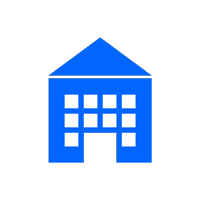![]()
CT Scan
May 28,2024 Update
Guide to the CT scan room
CT stands for Computed Tomography. This is an examination where the body is placed in a large bore in the center of the CT apparatus which uses X-rays and computer processing to examine and image the state of the inside the body. In addition to the images which are round slices of the body, they can create cross-sections and 3D images from various directions, such as from the front and side of the body.
Our CT scan rooms have four machines: two SIEMENS 128-slice CTs and two 16-slice CTs. Approximately 120 CT scans are performed daily.
A 128-slice CT scan can more quickly obtain at one time, a very fine, less than 1 mm, high-definition image with dual energy imaging for identification or separation of images that is not obtained in normal CT scans. In addition, because the bore in the center is larger than previously used in CT devices, the examination is easier to perform, and the claustrophobic feeling is reduced.
Also, the examination of the coronary artery that usually nourishes the heart used to be performed via a heart catheter examination, where a catheter (tube) was inserted from an artery in the limbs while the patient was hospitalized, but it is now possible to obtain images of coronary arteries without hospitalization by injecting a contrast agent in a vein similar to the normal contrast-enhanced CT scan while in a CT device equipped with an electrocardiogram. Because the heart is always moving, you need to have a fast time resolution (similar to the shutter speed of the camera). Since the time resolution of our hospital's 128-slice CT can be 75 msec, it is now possible to perform a cardiac CT scan corresponding to the movement of any heart, such as for patients with a high heart rate or arrhythmia.

128-slice CT SOMATOM X.cite

128-slice CT SOMATOM Definition Flash

16-slice CT SOMATOM Emotion16
| Examination Room | CT Equipment |
|---|---|
| X-12A | SIEMENS SOMATOM Emotion16 (16-slice CT) |
| X-12B | |
| X-13 | SIEMENS SOMATOM X.cite (128-slice CT) |
| X-14 | SIEMENS SOMATOM Definition Flash (128-slice CT) |
Time for the examination
The examination time is usually 5-10 minutes for a simple CT scan, and about 10-20 minutes for a contrast-enhanced CT scan. This may differ for the same examination site depending on the contents of the exam. In fact, the time the X-rays will be applied will depend on the examination site and the details, but it has been reduced due to progress in the CT devices.
Important Points
- Please refrain from wearing underwear with metal, or clothing with fasteners, etc. If the metal part overlaps with the examination site, you may need to move the clothing or change to an examination garment.
- Wigs and dentures may need to be removed depending on the examination site (head and neck).
- A CT scan is a test that is sensitive to movement. We may ask for your cooperation such as having you hold your breath or not move your body during the examination. A small child may need to sleep before the examination if they tend to move during the examination.
- Please talk to the attending doctor or the CT room staff if you might be pregnant.
◎ To patients who are using contrast agents
Before the examination
- Please drink water and tea as usual so that you do not get thirsty.
- You may not be able to have an examination with the contrast agent depending on the details of the disease that is currently or was previously being treated, so please consult with your attending doctor. (Asthma, hyperthyroidism, multiple myeloma, primary macroglobulin, pheochromocytoma, renal dysfunction, etc.)
- Please be sure to talk to your attending doctor if you have had any side effects before when using a contrast agent.
- Please continue to take the medicines you are taking as usual unless otherwise instructed. You may be asked to refrain from taking some medications for diabetes.
During the Examination
- When the contrast agent is injected, your body may feel hot, but do not worry, because this will disappear when the injection ends. There is a rare possibility that side effects may occur, so please do not hesitate to let us know if you feel sick.
After the Examination
- The contrast agent will be excreted from the body in the urine. In order to encourage the excretion of the contrast agent, patients who do not have limits on fluid intake should drink a little more water and tea than usual.
- Because there are no activity restrictions, even when using a contrast agent, please continue with your normal life.
Contact information
049‐228‐3518 [Department of Radiology, CT Scan Room Direct]
- Please feel free to contact us if you have any questions about the examination.
- Please contact the department in charge if you are unable to visit the hospital on the day of your examination or if you have any questions about changing your appointment.




